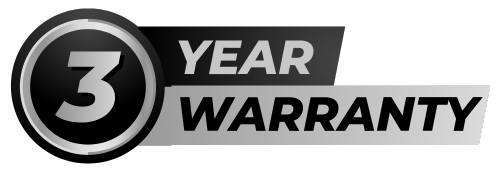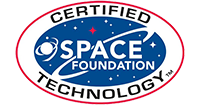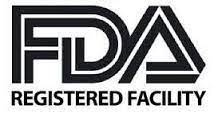Menu
Menu
Home — Knowledge base
Red light therapy is typically not a covered treatment. You may want to call your health insurance company before seeking treatment.
You’ll likely need ongoing treatments. This is not a one-time treatment for most skin conditions. You’ll need to be seen one to three times a week for weeks or even months. Also, is there a need for additional touch-up treatments? This may add up to a lot of time and considerable out-of-pocket costs.
Everyone’s skin is different so results can vary. Also, the wavelength of the red light source ranges. The wavelength affects how deeply the light penetrates your skin. The wavelength of the red light device being used in a doctor’s office versus in your at-home device could affect your desired result.
For example, is a tanning salon a place you feel comfortable receiving this treatment or might it be better to first be seen and possibly treated by a medical professional?
Are other, more scientifically vetted approaches a better choice for my skin condition? See your healthcare provider to confirm a diagnosis and discuss appropriate treatment options.
A note from Cleveland Clinic
Red light therapy is being promoted as a treatment for some common skin conditions. It’s still an emerging therapy but holds a lot of promise. If you’re interested in RLT treatment, it’s best to first discuss this with your healthcare provider or dermatologist. Your skin professional will examine your skin first and then confirm a diagnosis. Then, you’ll work together to discuss treatment options that’ll achieve your desired result. Options may or may not include red light therapy. Never hesitate to ask your healthcare provider about treatment options — including if you have an interest in a particular therapy, if it’s appropriate to use for your skin condition and if it’s safe and effective.
The effects are photochemical, just like photosynthesis in plants. When the correct parameters are used, light reduces oxidative stress and increases cellular energy (ATP). This in turn improves cell metabolism and reduces inflammation. PBMT appears too good to be true as it has many applications, but really it does just one thing and it does it very well.
It reduces oxidative stress. Oxidative stress is essentially an imbalance between the production of free radicals and the ability of the body to counteract or detoxify their harmful effects through neutralization by antioxidants, is critical in helping the body recover. Oxidative stress is accepted as the underlying trigger for most diseases and degenerative conditions.
It is also a component in the inflammatory phase of acute and chronic injuries. Extensive research during last two decades has revealed oxidative stress can lead to chronic inflammation, which in turn contributes to chronic diseases including cancer, diabetes, cardiovascular disease, neurological disorders and pulmonary diseases.
Red Light Therapy has been effectively used as a nonmedical intervention for reducing recovery time resulting in athletes:
Running faster and longer with less fatigue
Lifting heavier weights
Achieving higher benchmarks sooner
As a non-medical intervention for musculoskeletal conditions such as:
Arthritis
Muscle soreness
Joint pain and stiffness
As a non-medical intervention for inflammatory conditions such as:
Fibromyalgia
Chronic fatigue
Rheumatoid arthritis
Psoriatic arthritis
See our Research & Case Studies page for how Red Light Therapy can help boost Athletic Performance and manage these conditions.
Manage Pain & Inflammation
Boost Weight Loss
Enhance Athletic Performance
Rejuvenate Skin
Reduce Fatigue
Pregnancy and cancer and clients that have had organ transplants. More research is necessary to detect any potential adverse effects on patients with these conditions before PBM Therapy can be utilized by these clients.
Yes, with parental informed consent.
All persons present during device operation must wear approved protective eyewear. Prescription contacts or glasses can be worn under goggles. Protective goggles are provided.
It is recommended 3 x per week until desired effects until goals are met. At that time you can reduce to 1 or 2 x per week for maintenance and wellness depending on your goals.
PBMT does not heat tissue, it does however increase circulation so a warming sensation is often experienced. Reported subjective feedback:
Temporary euphoric feeling.
Increased energy levels.
Improved sleep patterns.
Improved mood.
Improved skin clarity and tone.
Improved bowel function.
Decreased swelling of extremities.
Increased energy.
Increased mental clarity.
Increased general sense of well being.
These outcomes may not apply to every person, and are not intended to guarantee, promise, represent and/or assure that anyone will achieve the same or similar results. Occasionally some clients may experience mild fatigue, discomfort, or aches after treatment. These responses should reduce after 24-48 hours, if they persist notify your technician at your next appointment.
This Full Body Wellness Light Pod is a General Wellness Device. The device is built according to current Good Manufacturing Practices and is in compliance with applicable standards as required by FDA.
THE CLASS I INTENDED USES ARE:
Restoration of motion to joints
• Redevelop muscles
• Adjunct to obesity as part of a diet and exercise program
THE CLASS II INTENDED ARE:
Relaxation of muscles and relief from muscle spasms
• Temporary relief of minor muscle and joint aches, pain and
stiffness
• Temporary relief of minor pain and stiffness associated with
arthritis
• To temporarily increase blood circulation
No. The LEDs are cooled by a patent-pending cooling system to keep you comfortable.
10 – 15 minutes.
Every person’s condition is unique, therefore the treatment course is as well. However, there are some general rules of thumb that apply to PBMT.
Acute injuries and inflammation from muscle strains and sprains, cuts, bruises, burns, etc typically show very rapid improvement and can resolve in 3/4 times a weeks. Long-term, chronic conditions can take 2-3 weeks to get significant benefits, weeks to months for maximum benefits, then weekly or bi-weekly sessions may be necessary to maintain benefits. We recommend starting with 3 sessions for 3 weeks. Maintenance is 1 or 2 sessions a week depending on your goals.
To date there are over 550 Randomized Controlled Trials and over 4000 laboratory studies have been published using PBM devices. PBMT is used in thousands of clinics, hospitals and elite sports institutions in over 70 nations. There are approximately 40 new papers per month being published. The primary evidence is in musculoskeletal pain and dysfunction, however a wide variety of conditions are being studied as well. To review the published research, go to PubMed.gov and search by the terms Photobiomodulation, LLLT or Low Level Light Therapy.
Red Light Therapy can now be delivered to the entire body using a state of the art FULL BODY DELIVERY SYSTEM. Now in just 10 minutes, a full body light session that targets inflammation and stimulates repair can be delivered.
Wear whatever you want, preferably something easy to take off.
In your session, you will want to take off all clothing since light will not penetrate through cloth.
Ora red light therapy is a non-invasive treatment that uses red light to improve skin health, reduce inflammation, and promote collagen production. It has also been shown to have pain-relieving and healing benefits for conditions such as arthritis and muscle strain.






Contact Info
If you have any inquiries or questions, please send your messages here.
Important Links